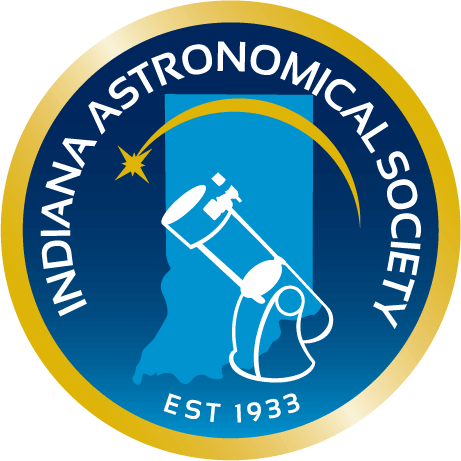Phil Dimpelfeld from the Indiana Astronomical Society creates a Novice/Urban Observing List each month for newbies like myself with not-so-dark skies and not-so-powerful equipment. Phil splits the list into different levels based on difficulty. Level 1 objects are relatively easy to find, and Level 2 and 3 are fainter and therefore more challenging to spot. To complete the monthly challenge, you must observe at least 6 objects regardless of the difficulty level.
Last month, I observed 6 objects. I photographed most of my objects in the same night - which was handy because we had a couple clear weekends last month. However, doing them all at once was a huge burden in terms of processing time, and I spent much longer shuffling files around on my computer than I did actually observing the objects. I prefer to spread my observing out over the month and enjoy photographing a couple objects at a time.
This month looks like a good time to break out the refractor and try to split some double and triple stars. I did a lot of gray fuzzy blob Messier objects last month, so multiple stars and lunar landmarks might be a good change of pace for me.
LEVEL 1
Kappa Boötis, Double Star in Boötes, 14h 13.5m, +51° 47, mag = 4.6, 6.6, sep = 13.4"
Pi Boötis, Double Star in Boötes, 14h 40.7m, +16° 25', mag = 4.9, 5.8, sep = 5.6"
Epsilon Boötis, “Izar”, Double Star in Boötes, 14h 45.0m, +27° 04', mag = 2.5, 4.9, sep = 2.8"
Alpha Librae, “Zubenelgenubi”, Double Star in Libra, 14h 50.9m, -16° 02', mag = 2.8, 5.2, sep = 231" (easily split with binoculars). From Arabic, meaning “Southern Claw” (Libra was once part of a bigger Scorpius).
Xi Boötis, Double Star in Boötes, 14h 51.4m, +19° 06', mag = 4.7, 7.0, sep = 6.9"
✔ Saturn [Observed 1:45am ET 6/15/2014], planet currently in Libra, 15h 05m, -14° 54’, mag = 0.7, size = 18” (43” with rings).
Delta Serpentis, Double Star in Serpens Caput, 15h 34.8m, +10° 32', mag = 4.2, 5.2, sep = 3.9"
Zeta Coronae Borealis, Double Star in Corona Borealis, 15h 39.4m, +36° 38', mag = 5.1, 6.0, sep = 6.3"
LEVEL 2
M102 - the “Spindle Galaxy” (NGC 5866), in Draco, 15h 06.5m, +55° 46’, mag = 10.8, size = 6.5’ x 3.1’
M5, Globular Cluster in Serpens Caput, 15h 18.6m, +02° 05', mag = 5.7, size = 17.4’ (this is a very nice globular that rivals M13)
Mu Boötis, Triple Star in Boötes, 15h 24.5m, +37° 23', mag = 4.3, 7.1/7.6, sep = 107”/2.2”
LEVEL 3
NGC 5466, Globular Cluster in Boötes, 14h 05.5m, +28 32’, mag = 10.5, size = 11’
M101 – the “Pinwheel Galaxy”, in Ursa Major, 14h 03.3m, 54° 22’, mag = 8.5, size = 22’. M101 can be very elusive because of its large size and low surface brightness.
NGC 5566, Barred Spiral Galaxy in Virgo, 14h 20m, +03° 56’, mag = 11.1, size = 4.4’ x 1.5’
LUNAR
✔ Aristoteles, first quarter Moon
Copernicus, last quarter Moon
NOTES:
Saturn – can you see the Cassini Division in the rings? There are a handful of moons that can be seen in an amateur scope. In order of magnitude, these are: Triton (9.0), Rhea (10.3), Tethys (10.8), Dione (11.0), Iapetus (11.8), and Enceladus (12.4).

No comments:
Post a Comment